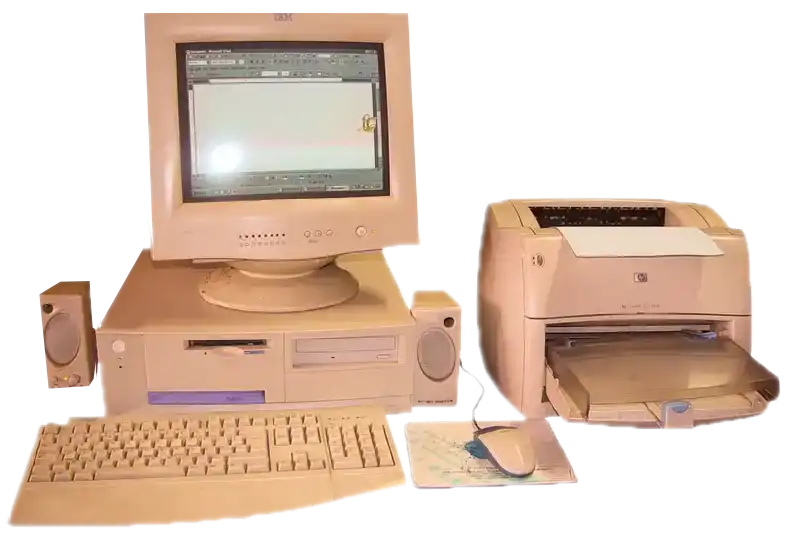ASEI PDSI Lesson Note On Computer Studies
Computer System
Theme: Basic computer operation and concepts
Topic: Computer System
Sub Topic: Components of the computer system
Date: dd/mm/yyyy
Class: Basic Five
Duration: 35 Minutes
No of Learners: 30
Learning Objectives:
By the end of the lesson learners should be able to:Say what the computer system is.
The computer system is an interrelated part of the computer working together to function as one.

Identify the component of the computer system.
- Hardware
- Software
- Human ware / Peopleware / User
Rationale:
In the world today, every aspect of man make use of the computer, or is related and connected to the use of the computer. The human legs cannot walk without the brain neither can the brain do the walking without the legs, so also the computer. The computer can only perform its functions with the connection of some interrelated parts to form a computer system. Therefore, there is a need to teach our learners about the computers system since the computer is useless without its system.
Prerequisite/ Previous knowledge:
Learners have learnt what a computer is.Learning Materials:
Computer hall / ICT centre in the School, Flashcard of various components of the computer, Picture of the computer system.Reference Materials:
Foundation Computer Studies for Primary Schools' Book 5 by E. O. Adegbeyeni et al.Lesson Development:
| STAGE | TEACHER'S ACTIVITY | LEARNER'S ACTIVITY | LEARNING POINTS |
|---|---|---|---|
| INTRODUCTION full class session (3 mins) | The teacher asks learners what is a computer. | Learners defined a computer in their own words. A computer is an electronic machine, accept data, process data & give information in a way that is suitable for its user. |
Confirming the previous lesson. |
| DEVELOPMENT Step 1. Group Work (2 mins) | The teacher guides the learners to form four groups and ask them to choose their leaders and secretaries. | Learners choose their group leaders and secretaries. | Inculcating leadership skills, competitive spirit, cooperation, teamwork and a sense of responsibility among learners. |
| INTRODUCTION Step 2 Full class session (7 mins) | In groups, the teacher asks learners, to name parts of the body that makes up the body. Teacher to give affirmation and compliment learners for their good effort. |
Learners expected response; The head, legs, hands, eyes, ears, etc. |
Developing the ideas of a system and introducing the topic Computer system. |
| The teacher explains to learners that the parts of the body mentioned in the learners’ activity above are the body system. The teacher gives each group a flashcard and asks learners to define a computer system in their own words. |

Learners expected to respond; The computer system is an interrelated part of the computer working/connected to function as one. |
Definition/ meaning of computer system. | |
| Stage 3 Full class discussion (10 mins) |
The teacher asks learners to mention all the parts that are interconnected in the picture above. Teacher writes learners comments on the board. The teacher writes learners comments on the board. The teacher may engage learners in other group activities that will lead learners to mention/ list the components of the computer system. Such as;
|
Learners expected to respond.
|
Developing the idea of the component of the computer system. |
Teacher asks learners in group activities:
|
Learners expected response:
|
||
The teacher gives the class a prompt (the computer system is made up of three distinct components) and gets learners to discuss their views in group activities. |
Learners expected response:
|
Learners are enthusiastic to speak up and make attempt. Components of the computer system. |
|
| Evaluation. Full class session (10 mins) | Ask the following questions to evaluate the achievement of the set objectives.
|
Learners expected response:
|
Confirming the achievement of the set objectives. |
| Conclusion, full class session (3 mins) | The teacher asks learners, all parts of the computer are connected to ____ part/unit for processing? | Learners expected response.
Learners concluded the lesson that all parts of the computer are connected to the system unit. |
Acquiring/ improving understanding of computer systems. |
| ASSIGNMENT | The teacher gives learners a take home.
|
Learners answer other questions. | Improving their level of understanding of computer systems. |